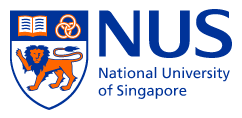Plastic solar cells: new morphology control to boost power efficiency
28 Dec 2012. ONDL scientists, in collaboration with researchers at the Cavendish Laboratory of the University of Cambridge, has announced in Nature Communications today (Bo Liu et al, “High internal quantum efficiency in fullerene solar cells based on crosslinked polymer donor networks”, doi: 10.1038/ncomms2211(open access)), a breakthrough in the morphology control and performance of plastic solar cells.
Plastic solar cells are devices based on plastic semiconductors that convert sunlight into electricity. Because these materials can be processed inexpensively over large areas using a variety of coating methods, such as inkjet printing and doctor-blade coating, they can potentially provide large solar cell “foils” that can harvest sunlight falling on roof tops, windows and other surfaces. This can enable energy self-sufficiency for certain applications. While the power conversion efficiencies of plastic solar cells, a key figure-of-merit for performance, have improved by leaps and bounds to about 10% today, efforts to systematically optimize these cells have met only with modest progress despite worldwide efforts, chiefly due to the challenge in controlling their donor–acceptor morphology. This morphology is one of the most important factors that determines how efficiently the exciton generated by photon absorption can be separated into the desired electron and hole pair.
In this most recent breakthrough, the scientists have developed a new device architecture using acceptors doped in a polymer donor network. This provides a means to regulate the donor–acceptor morphology, and at the same time achieve higher performance and better reproducibility in the final solar cells. Different from the usual approach to deposit films of mixtures of the donor and acceptor, these cells were fabricated in two stages by forming a first lightly-crosslinked polymer donor film (which was poly(3-hexylthiophene), and then fullerene acceptor doping (which was the usual PCBM). In this way, a number of challenges related to phase connectivity and coarsening were overcome. These cells have demonstrated photon-to-electron internal quantum efficiencies of 90% across a wide range of poly(3-hexylthiophene): PCBM compositions, which provides a new quantum-efficiency benchmark for plastic solar cells. Their characteristics are also not overly dependent on processing conditions such as solvents, which is an important added advantage. This makes the new device fabrication concept simple, scalable and potentially manufacturable on large areas.
“Through the new device architecture, we have also been able to systematically map out the power conversion efficiency and internal quantum efficiency landscapes of plastic solar cells without loss of control over the donor–acceptor morphology. These are important fundamental studies that have revealed unambiguous new signatures of optical interference and of the donor–acceptor morphology effect,” says Prof Peter Ho, a lead investigator on the physics team. This breakthrough leveraged on a previous breakthrough by the chemistry team to develop a general photocrosslinking platform suitable for use in plastic electronics, led by Prof Lay-Lay Chua, and new applications developed by the advance device technology team led by Dr Rui-Qi Png (see: Png, et al, Nature Materials 9 (2010) 152), in collaboration with Prof Richard Friend from the University of Cambridge. Friend was previously Centennial Professor of NUS. Part of the work was also carried out at the Solar Energy Research Institute of Singapore (SERIS), which is owned and operated by NUS.
|

